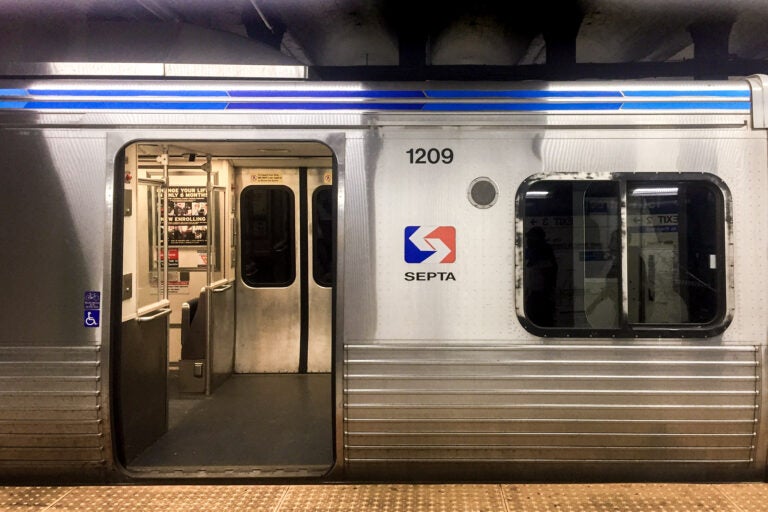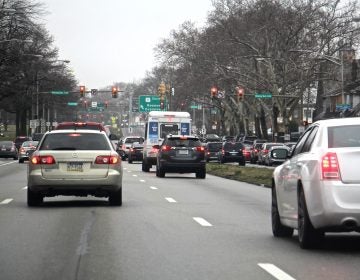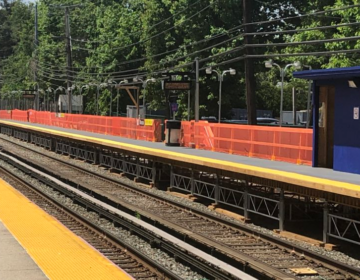Stop blaming ‘car culture’ for SEPTA’s declining ridership
Many people choose cars over transit for valid reasons. When we blame an abstract concept, we ignore the implicit call for change in their voices.

An empty SEPTA train car. (Anna Orso/Billy Penn)
Last month, public transit advocates from all across Philadelphia showed up to support Kensington community members protesting on behalf of their train station. SEPTA management had decided, without talking to residents, to close Somerset Station on the Market-Frankford Line to all riders. The rally was an inspiring example of the power of activism and solidarity, and it worked: Somerset reopened ahead of schedule, and community groups are continuing to hold SEPTA accountable to Kensington. This is just one example of how transit advocacy makes SEPTA better.
I love public transit, and I love seeing people come together to make institutions more responsive. That said, pressing agencies to do the right thing is just one part of fighting for public transit. We don’t just want great service for people who are already taking the trains, trolleys, and buses — we also want the transit system to attract new riders. And for all the cheerleading we do, the truth is that sometimes we can’t even persuade the people in our own lives to try public transit. No matter how much we repeat that transit is safer, greener, and more affordable than driving, we can’t always get our friends and family out from behind the wheel.
Some transit advocates have explained this problem by blaming “car culture.” They’re absolutely right to name the way that socialization and mass media shapes our beliefs and habits. At the same time, focusing on an abstract concept like “culture” instead of the responsibility of institutions comes with a danger.
Many people choose cars over transit for valid reasons. When we blame an abstract concept, we ignore the implicit call for change in their voices. We risk laying blame for problems we don’t understand at the feet of people we don’t know, for choices we haven’t had to make. That’s a pattern we’ve seen in conversations around public health, gender inequity at work, and even baseball.
As a transit advocate, my goal is to improve public transit and ensure that everyone has good alternatives to driving. We can’t begin by assuming that everyone who commutes by car is making a selfish or self-defeating decision. That process has to start with listening. With that in mind, I reached out to a friend, someone I’ve never seen eye-to-eye with about transit.
For two years, I worked in Center City at the same job on the same shift as LaToya. We both lived in West Philly, with the same public transit options. For those two years, I took the trolley back and forth, while she drove. I paid less than five dollars a day for my commute. My trip took 15 minutes and since I didn’t have to keep my eyes on the road, I read the paper or listened to the Trolley Poet. Driving the same route on the streets above the trolley tunnel, LaToya sat in traffic, paid for gas and parking, and walked into work complaining about other drivers.
The trolley wasn’t her only alternative, either. There were multiple buses either of us could have taken, and the El was within walking distance. So: why drive?
Our conversation started promisingly. Immediately after I asked her if she could answer some questions I had about commuting she texted back “Driving is hell.” Over email, she wrote: “When I moved to Philadelphia in 2014, I utilized SEPTA for my everyday travel. It was a huge transition as I am from Georgia and used to having a car for everything. However, SEPTA was highly accessible, affordable, and much better than paying for parking daily.”
She was saying what I would have said to her to talk her into staying with SEPTA. But if the pluses she listed for public transit were expected, so were the minuses. LaToya was concerned about the cleanliness and waiting areas, but I wasn’t surprised when she wrote: “Safety is my biggest issue.”
“Safety,” of course, was the reason SEPTA management gave for the closure of Somerset. The public outcry shows that they didn’t get it right. Safety doesn’t mean removing resources from our communities. That fundamental misunderstanding has let people down both in Kensington and in West Philly.
Real safety means protecting residents from exploitation and addressing Philly’s mental health crisis. When West Philly neighbors spoke to a reporter about safety last year, their suggestions included reinvestment in community centers and peer mediation. If the leaders of our institutions had listened then, would riders still be afraid to take public transit? Would operators still be afraid to go to work?
SEPTA’s responsibility is not just to riders and operators. It’s also to our friends and neighbors who want to ride the buses and trains, but see that the agency isn’t listening, and make the decision that they’ll take their chances behind the wheel instead. Public transit should be for everyone. We’re not customers; we’re community.
This week, Mayor Jim Kenney and City Council are hashing out the details of the city’s next budget. Included is $3.5 million for SEPTA from the capital budget atop its usual allocation from the general fund. Let’s hope these dollars fund the improvements that former riders like LaToya want to see.
Matt Sullivan rides the 13 and 34 trolleys, and he thinks you should too.

Subscribe to PlanPhilly
WHYY is your source for fact-based, in-depth journalism and information. As a nonprofit organization, we rely on financial support from readers like you. Please give today.









